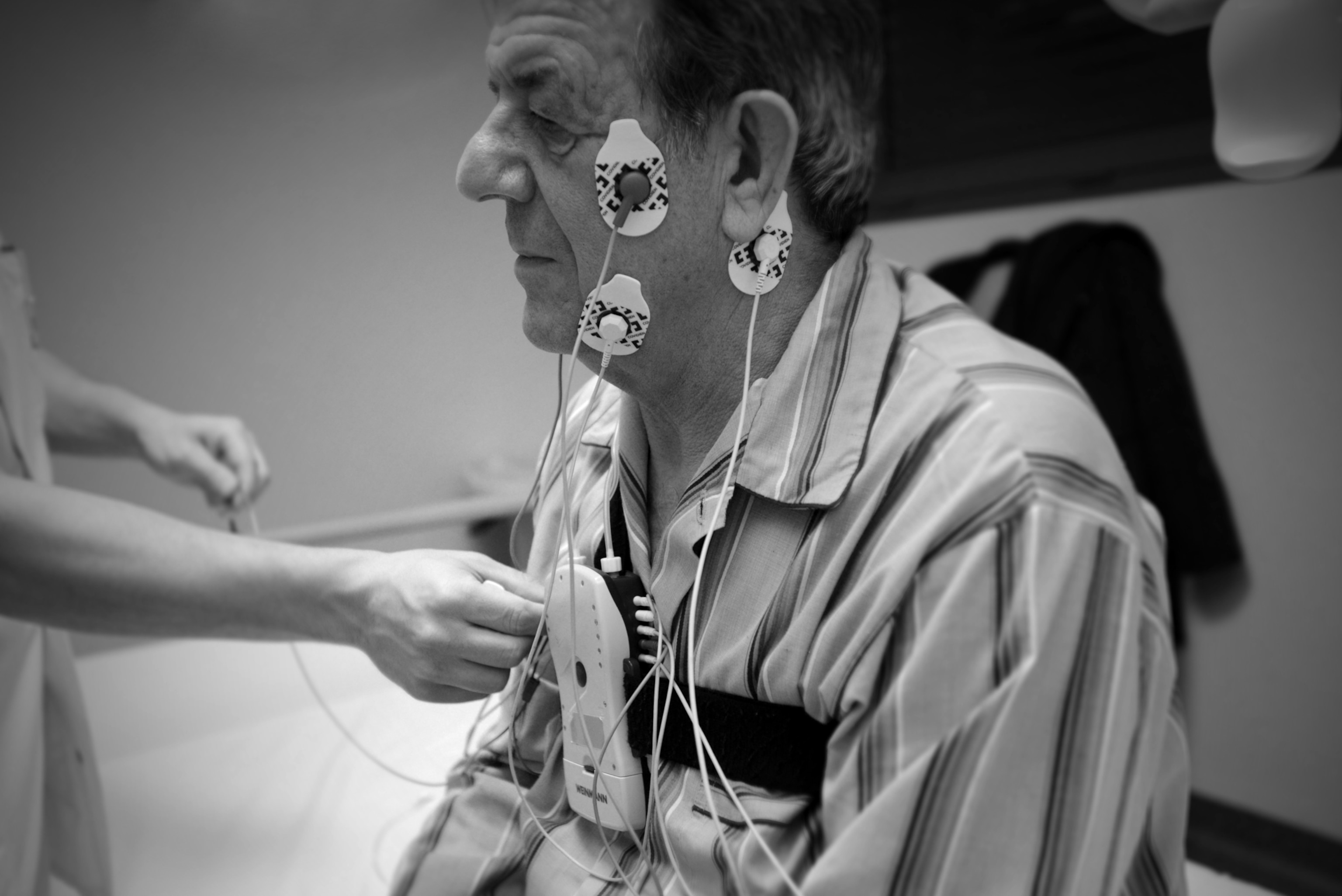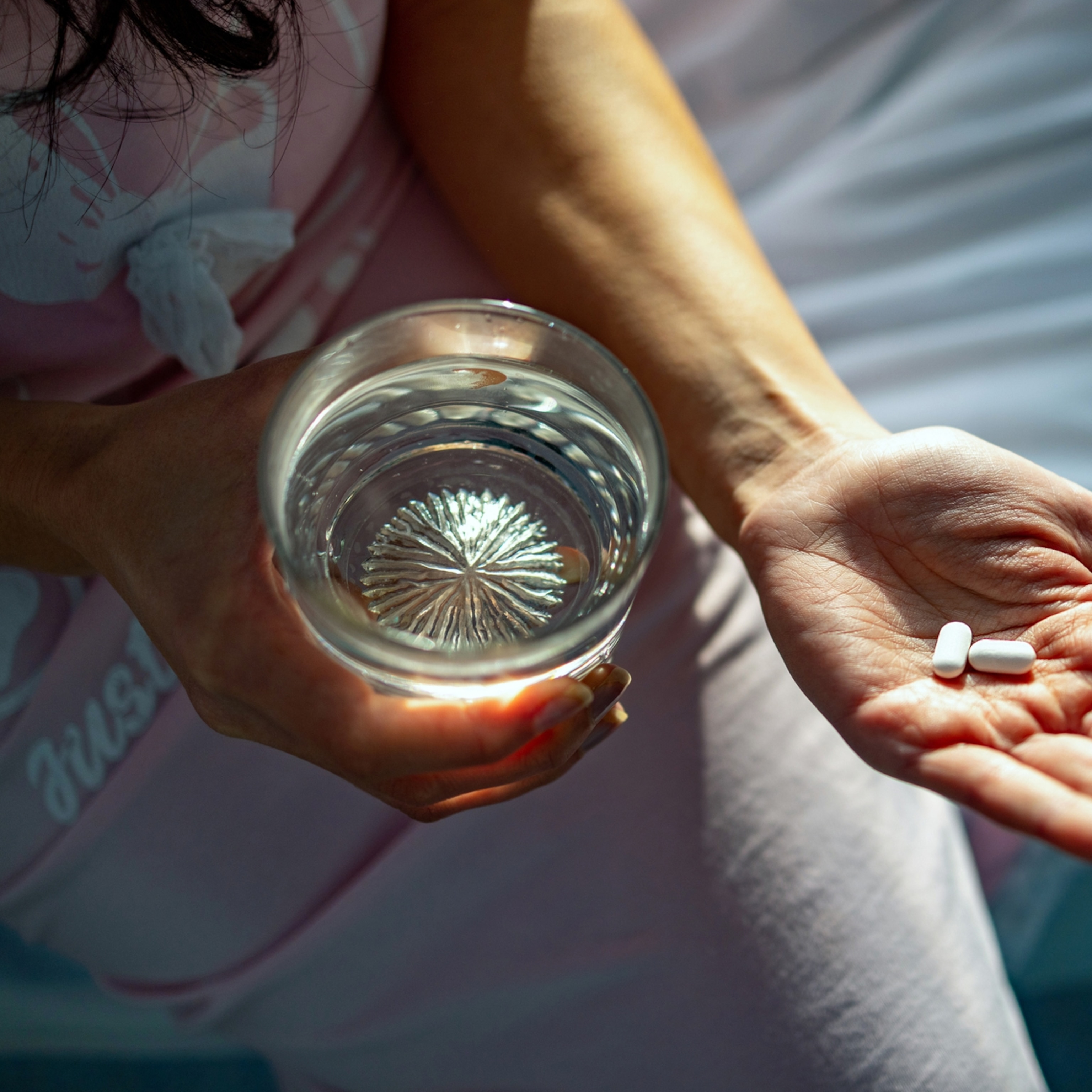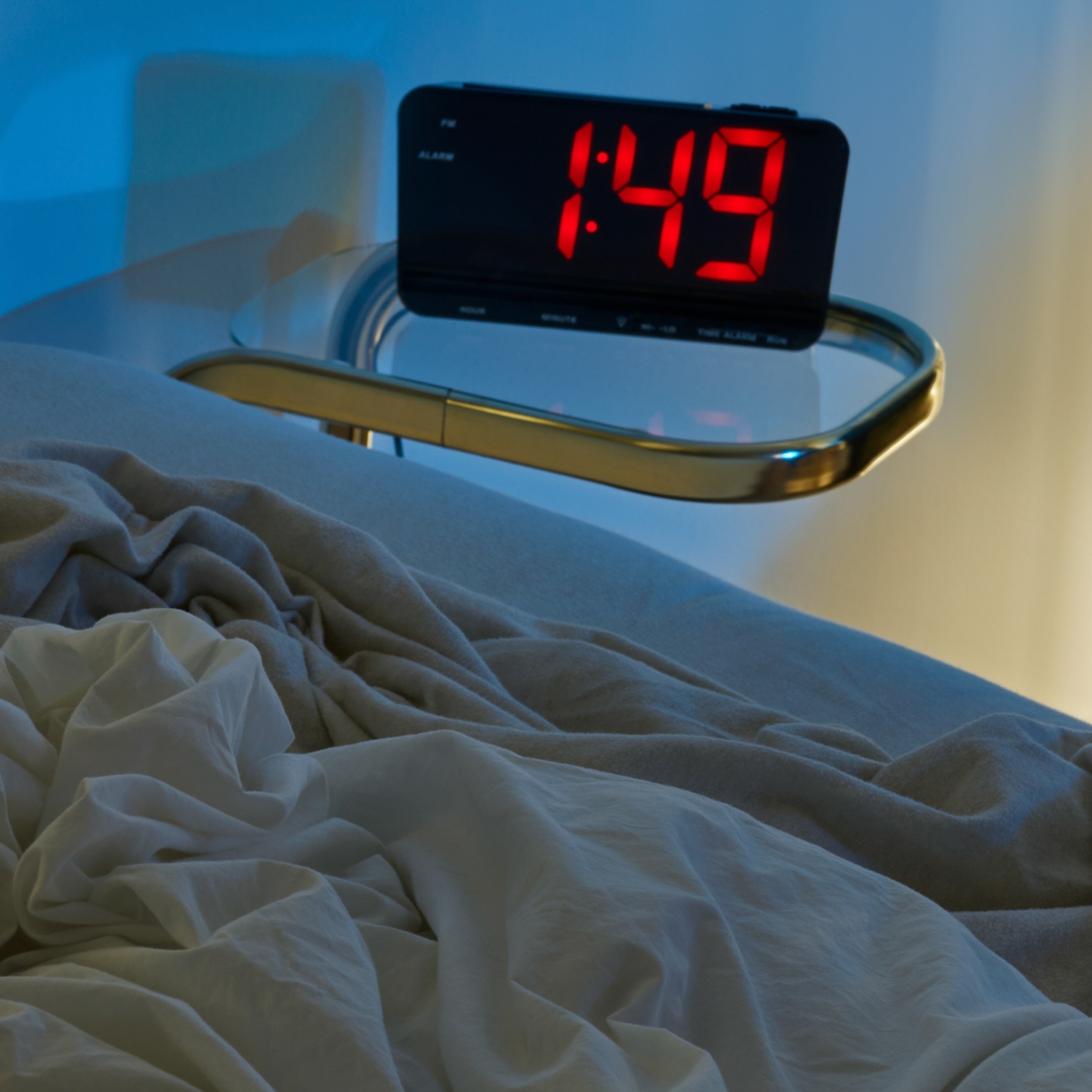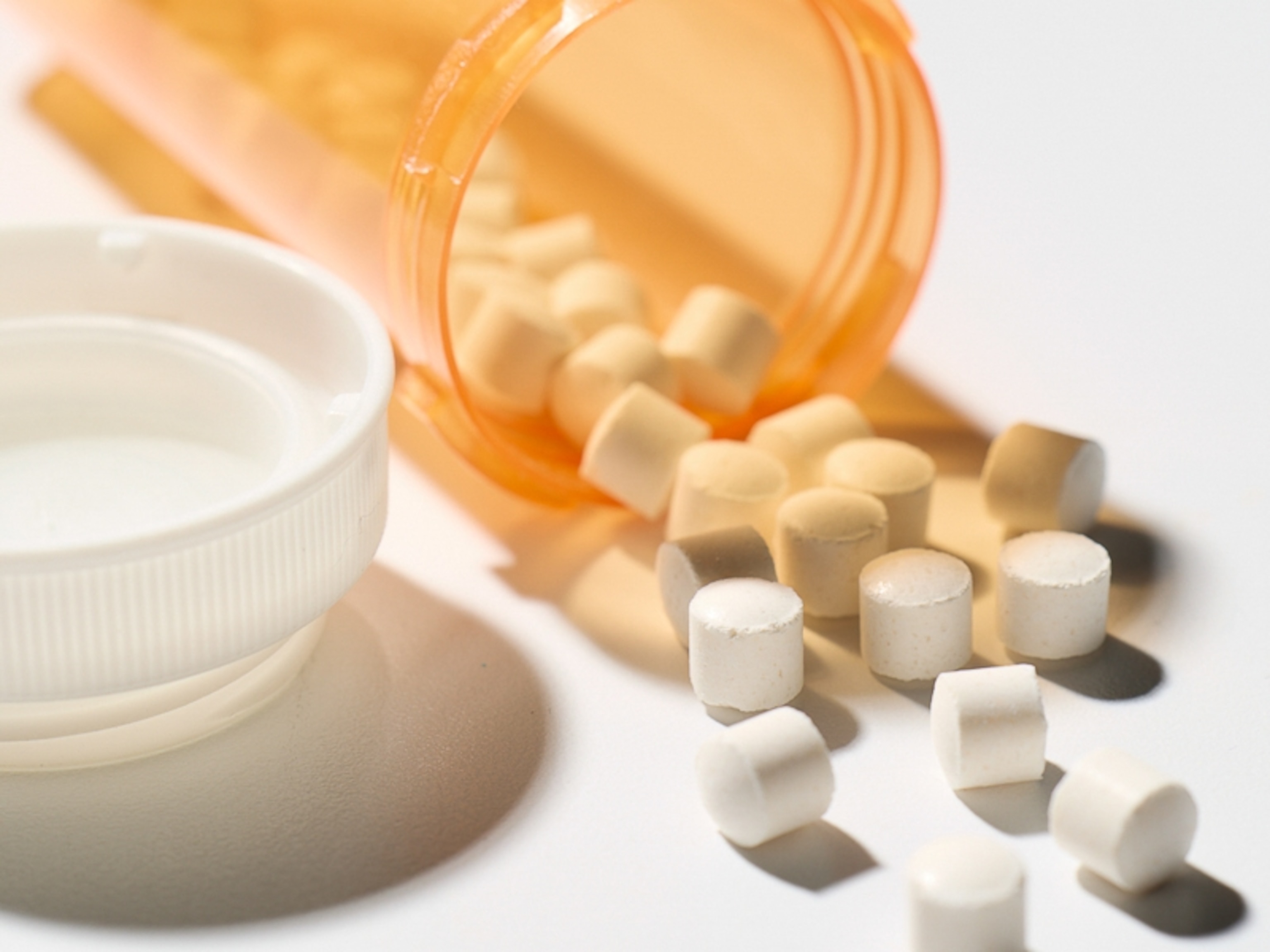The toll that sleep apnea takes on the body
Even mild sleep apnea can cause you to stop breathing several times an hour—setting off a cascade of threats to your brain and heart health.

Humans do lots of things in their sleep. Some of us talk, others will get up and walk around. We often dream. One thing we all do—hundreds of times, each and every night—is breathe.
The cessation of inhales and exhales can kill in minutes, which would imply that breathing during sleep should be a no-brainer. But an estimated 15 to 30 percent of males and 10 to 15 percent of females stop breathing during sleep several times each hour throughout the night.
The condition is formally known as obstructive sleep apnea, and it occurs when the airway collapses during sleep. Although it’s more common in men, older adults, and those with obesity, the condition can also affect people of all shapes and sizes—including children. Linked to health problems like heart disease, diabetes, and dementia, treating sleep apnea is a priority, says Lee Surkin, physician and founder of the American Academy of Cardiovascular Sleep Medicine.
(Here's everything you need to know about the science of sleep.)
“It has effects on metabolism and promotes weight gain, both of which can make sleep apnea worse. It’s a vicious cycle there,” Surkin says.
The dangers of sleep apnea are clear—but experts say one of the biggest challenges in preventing them is knowing you need to get tested.
What is sleep apnea?
Over 20,000 times per day, the lungs pull oxygen-rich air into the body and push out carbon dioxide. Both ways, a person’s breath travels through their airway. If the airway is blocked while you’re awake, say by a stray crumb of food that’s inhaled, you immediately try to clear it.
If the airway regularly becomes blocked during sleep, whether by collapsing in on itself or being physically blocked by the tongue or tonsils, it’s known as sleep apnea. A surge of adrenaline signals the drop in oxygen and resulting rise in carbon dioxide to the brain.
“Your brain is sensing this and is like, Dude, wake up. You’re going to die,” says Robson Capasso, a sleep medicine physician at Stanford. This warning from the brain causes you to gasp for air.
“This is a survival thing,” says Surkin. “It amps your body up. It causes you to contract your muscles to force open the airway.”
When someone is sound asleep, they often don’t remember these episodes. Instead, it’s often someone’s bed partner that is alerted to the issue.
“It can look like they’re struggling to breathe, and their partner will say, ‘I’m afraid you’re going to die because you’re not breathing’,” says Lois Krahn, a sleep specialist at the Mayo Clinic in Arizona.
But, over time, it takes a toll on the body.
“The body is put on alert. The heart works harder, and the brain wakes up,” Krahn says. “As a consequence, they sleep poorly at night, they’re not refreshed in the morning, and they feel tired during the day.”
People with mild or moderate sleep apnea may only have a handful of episodes each hour. Those with severe cases may have hundreds of episodes each hour.
In the short term, this can cause daytime sleepiness, headaches, fatigue, and lack of alertness. People with high blood pressure or diabetes may find that these other conditions are resistant to treatment.
What are the consequences of sleep apnea?
The daytime sleepiness and fatigue experienced by many with sleep apnea can cause problems directly. Tired people are more likely to have accidents in cars and with machinery.
It can also lead to cognitive and memory problems, along with depression and irritability. A meta-analysis of previously published studies in the Journal of Sleep Research found that, overall, individuals with sleep apnea had 1.43 times the risk of developing a neurocognitive disorder such as Alzheimer’s or Parkinson’s diseases.
(Why evenings are so hard on people with dementia.)
“It chops your sleep into a million pieces, like an alarm going off every 10 seconds in your bedroom, all night, every night when you sleep. So you can imagine how devastating it can be to somebody's rest and recovery,” says William Winter, a sleep medicine expert in Charlottesville, Virginia.
There are other consequences, too. The constant surge of stress hormones can cause abnormal heart rhythms known as cardiac arrhythmias, as well as an increased heart rate.
It can also cause a range of metabolic issues. A study in the Journal of Clinical Endocrinology and Metabolism found that those with untreated sleep apnea also had increases in blood sugar levels, the stress hormone cortisol, and the fatty acids in their blood, which may increase the risk of cardiovascular disease and diabetes.
To Winter, this and other studies show that sleep apnea isn’t just the result of health problems, it can also exacerbate existing metabolic problems and/or create new ones.
What causes sleep apnea?
The condition can be caused by any number of factors, says Capasso. Researchers believe that the three leading causes of sleep apnea are older age, being male, and having excess body weight, especially around the face and throat.
“These are a significant risk factors for the collapsibility of the throat during sleep,” Capasso says.
But it would be a mistake to think that if you’re not an older, heavy man that you’re not at risk for sleep apnea. Even children can be diagnosed with the condition, Winter says. Other studies have found genetic predispositions to sleep apnea, although scientists are still figuring out the full complement of genes linked to sleep apnea and how they function.
(That cocktail before bedtime isn't as helpful as you think.)
There are also anatomical explanations. Some people may have unusually large tonsils and adenoids (tissues in the back of the throat that play a role in immunity). Others may have a facial structure that leaves less room for the tongue and jaw to relax during sleep. Even at the best of times, a person’s airway can simply just be small.
“Then, when their muscles relax because they've fallen asleep, it gets even smaller,” Krahn says.
How is sleep apnea diagnosed?
Many symptoms, such as snoring, fatigue, and morning headaches, can be caused by a variety of conditions. It’s why David Kuhlmann, a board member of the American Academy of Sleep Medicine says that diagnosing sleep apnea is so important.
A sleep study is needed to diagnose sleep apnea. Historically, these were only performed using a polysomnogram, which records brain waves, heart rate, breathing, and oxygen levels in the blood. These are done at night, in a specialized sleep lab, and provide what sleep specialists say is the gold standard data about whether an individual has any sleep disorder, not just sleep apnea.
(How climate change is wrecking your sleep.)
But not everyone wants or needs such an in-depth study. In recent years, home-based sleep tests have become more popular. They don’t measure your sleep but rather your breathing, using a small mask, a pulse oximeter on your finger, and other sensors on your chest and abdomen. Together, the equipment can determine how well you’re breathing and the effort it takes for your airway to open during sleep. If results are inconclusive, your doctor may order a follow-up study in the lab, says Surkin.
How is sleep apnea treated?
Especially for people with more severe sleep apnea, the most effective treatment is known as CPAP, or continuous positive airway pressure. The machine “is a glorified air compressor,” Capasso says, and it takes the air from the room and pushes it through a mask worn over the nose and mouth during sleep. The extra oomph from the machine means that the air forces your throat to stay open.
The challenge for sleep specialists is to help their patients identify the style of mask they prefer wearing and to identify how much pressure their CPAP needs to provide. Some newer models adjust the air pressure automatically, Kuhlmann says.
“The person who invented the CPAP deserves the Nobel Prize because I can't think of many other people who have changed the course of history more than that person,” he says.
But not everyone can or will wear a CPAP mask, says Krahn, nor will everyone receive equal benefit from CPAP. In that case, other methods may still provide help, especially for those with mild to moderate sleep apnea.
Many sleep specialists say that some of their patients benefit from weight loss, which can make it easier for the airway to stay open. Dentists can provide special mouth guards or oral appliances to keep the jaw and tongue in a forward position during sleep. And for people who sleep on their back, switching to side sleep can also reduce episodes.
More invasive options include surgery to remove tonsils and adenoids that may block the airway, or to alter facial anatomy that can interfere with breathing during sleep. Another option, says Capasso, is a hypoglossal nerve stimulator. This device is implanted under the skin to provide stimulation to the nerves controlling tongue movement to keep it from interfering with breathing.
The good news, says Winter, is that many people with sleep apnea feel the benefits of treatment almost immediately.
“People become healthier and feel better relatively quickly. It’s a very rewarding space to be in,” he says.








